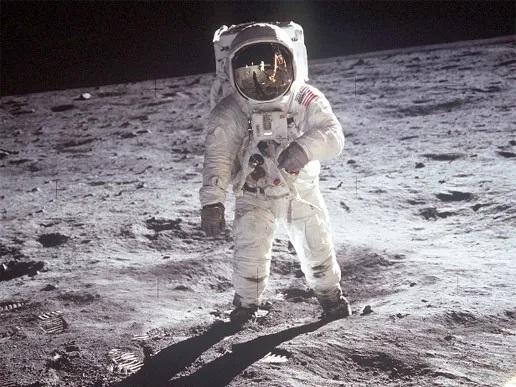
Word of the Day: Hiatus
Today’s word of the day, thanks to Merriam-Webster, is hiatus. Hiatus is a noun which means “a break or interruption in the continuity of a work, series, action, etc.” or “a missing part; gap or lacuna” (https://www.dictionary.com/browse/hiatus). The word entered the language in the “1560s, ‘a break or opening’ in a material object, especially in anatomy, from Latin hiatus ‘opening, aperture, rupture, gap,’ from past-participle stem of hiare ‘to gape, stand open’ (from PIE root *ghieh- ‘to yawn, gape, be wide open’). The sense of ‘gap or interruption in events, etc.;’ ‘space from which something requisite to completeness is absent’ [Century Dictionary] is recorded from 1610s” (https://www.etymonline.com/search?q=hiatus).
According to the On This Day website, on this date in 2011, the Space Shuttle Discovery launched for its final flight. It was not the last of the Space Shuttle missions, but it was the last for Discovery.
I grew up in the 1960s. I watched Star Trek TOS when it was actually broadcast. I was 12 when NASA landed men on the moon (and yes, I do believe that NASA landed men on the moon; a secret like “we didn’t really land men on the moon could not have been held for all these years; as Ben Franklin wrote in Poor Richard’s Almanac, “Three may keep a secret if two of them are dead”). I loved science fiction. I still think 2001: A Space Odyssey is one of the great films (my wife disagrees). So the Space Shuttle program held a real fascination for me.
During the 1950s, the USAF wanted to build a spaceplane that would be useful for military applications. They developed the X-20 Dyna-Soar. The worked with the newly format National Aeronautics and Space Administration (NASA) to train pilots for spaceplanes. Unfortunately, the Soviets launched Vostok 1 and Yuri Gagarin, and the space race. Suddenly the idea was to boost men to the moon rather than developing spaceplanes, and we ended up with the Mercury and Apollo projects. As wonderful as the Apollo missions were, they did not involve real piloting. But once we had been to the moon several times, the space race ended, and NASA went back to looking at designing and building spaceplanes to shuttle materials and people into orbit for the construction of a space station.
NASA built five space shuttles: Columbia, Challenger, Discovery, Atlantis, and Endeavor. The idea was to have 150 shuttle missions over a 15-year period. But refurbishing the space shuttles after a mission took longer and was more complex than NASA counted on, and two of the shuttles suffered catastrophic disasters.
On January 28 of 1986, the Challenger, carrying a crew of seven, including the first civilian in space, Christa McAuliffe, exploded just over a minute after its launch. McAuliffe was the first participant in the Teacher in Space program, initiated by Ronald Reagan to inspire students to reach for the stars. The rest of the crew included the commander, Dick Scobee, Michael Smith, the pilot, mission specialists Ellison Onizuka, Judith Resnik, and Ronald McNair, and two payload specialists, Gregory Jarvis, who was assigned to conduct research for the Hughes Aircraft Company, and McAuliffe. All were lost. The investigation into the disaster showed that an O-ring had failed because of the cold temperature. In a televised speech afterwards, Reagan said, “We’ll continue our quest in space. There will be more shuttle flights and more shuttle crews and, yes, more volunteers, more civilians, more teachers in space. Nothing ends here; our hopes and our journeys continue” (https://www.reaganlibrary.gov/archives/speech/address-nation-explosion-space-shuttle-challenger). But McAuliffe was the only Teacher in Space Program participant to be included in a crew. Years later NASA created the Educator Astronaut program, but it wasn’t the same.
On February 1, 2003, the Columbia suffered some damage to the tiles on one of its wings during takeoff. The Department of Defense wanted to take satellite photographs of the damage, but NASA refused them. One of NASA’s engineers suggested that astronauts on the Columbia do a space walk to determine the extent of the damage. NASA refused to allow a space walk. On re-entry, the tiles failed and the Columbia disintegrated. All seven members of the crew died: The crew included Commander Rick D. Husband, Pilot William C. McCool, four Mission Specialists, David M. Brown, Kalpana Chawla, Michael P. Anderson, and Laurel B. Clark, and Payload Specialist Ilan Ramon. Ramon was the first Israeli in space.
By 2011, NASA had flown over 130 shuttle missions, but the safety concerns led to the retirement of the remaining three space shuttles. The George W. Bush administration had planned the Constellation Project, designed to return humans to the moon by the year 2020. But Constellation was cancelled by the Obama Administration in 2011, the same year the Space Shuttle Program ended. Fortunately, private companies have taken on the job of opening space to people. Virgin Galactic flew a suborbital manned flight in 2018, and SpaceX flew a crewed mission to low orbit outer space in 2021.
While it is true that other countries were sending people into space, the United States experienced a ten-year hiatus in crewed missions. My own belief is that we need crewed missions to the stars for a host of reasons, not least of which is that we need a frontier to explore.
Today’s image comes from the North Edinburgh News, July 2019. The article was entitled “How the Moon landing 50 years ago inspired a generation,” written by Dave Pickering.